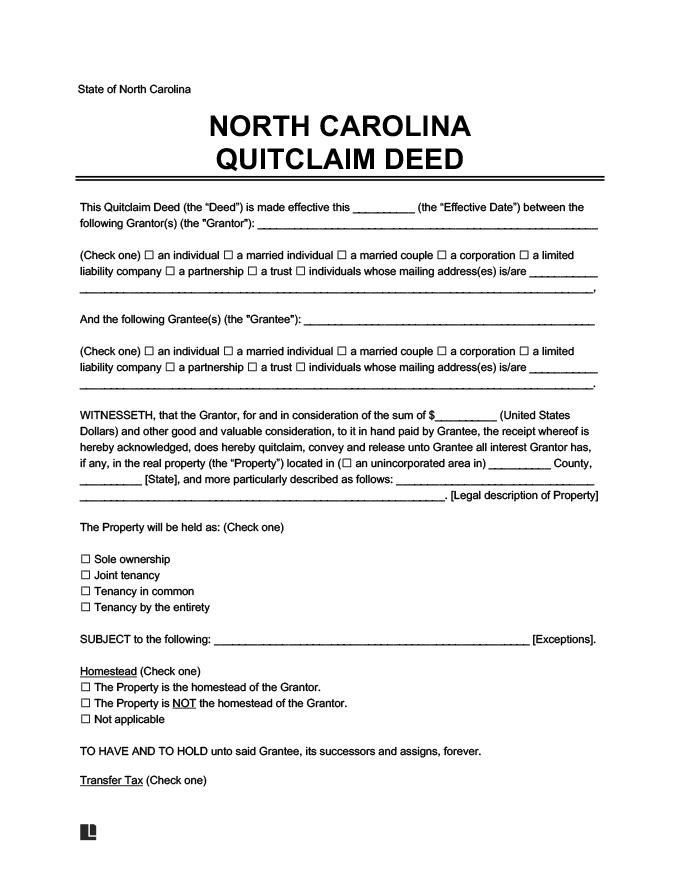Filing a quitclaim deed does not have to be a complicated process. By starting with a quitclaim deed template and making sure that you are prepared for the requirements laid out in N.C. Stat. § 47, you can streamline the property transfer and avoid many of the complexities involved in a property transaction using a general warranty deed.
Step One – Gather All Needed Information and Documentation
Before you start preparing your quitclaim deed or getting ready to file, make sure you have all the information you need in hand.
Look up the current title to the property, which will include critical information like the current owner of the property and the property’s legal description. With that documentation in front of you, it is much easier to fill out the content of your quitclaim deed.
Step Two – Fill Out Your Quitclaim Deed Form
Make sure that your quitclaim deed form contains all relevant content, from the name of both the grantor and the grantee to the legal description of the property. While you should make sure that you fill out all information required by the form, you should not sign it until you are in the presence of a notary.
Step Three – Get the Form Notarized
N.C. Stat § 47-38 requires you to have the grantor’s signature on your quitclaim deed validated by a notary. The grantor will need to show proof of identity, usually in the form of a government-issued ID.
Step Four – Take the Form to the Register of Deeds Office
According to N.C. Stat. § 47H-2, you should file your quitclaim deed with the register of deeds office in the county where the property is located. Be prepared to pay recording fees, including a $26 fee for a standard instrument that is not a deed of trust or mortgage, when you submit your deed.
You also will be asked for the address where the deed should be sent once it has been properly filed. However, you may want to make any relevant copies of the deed before you turn it in to make certain that both the grantor and the grantee have extra copies if needed.
